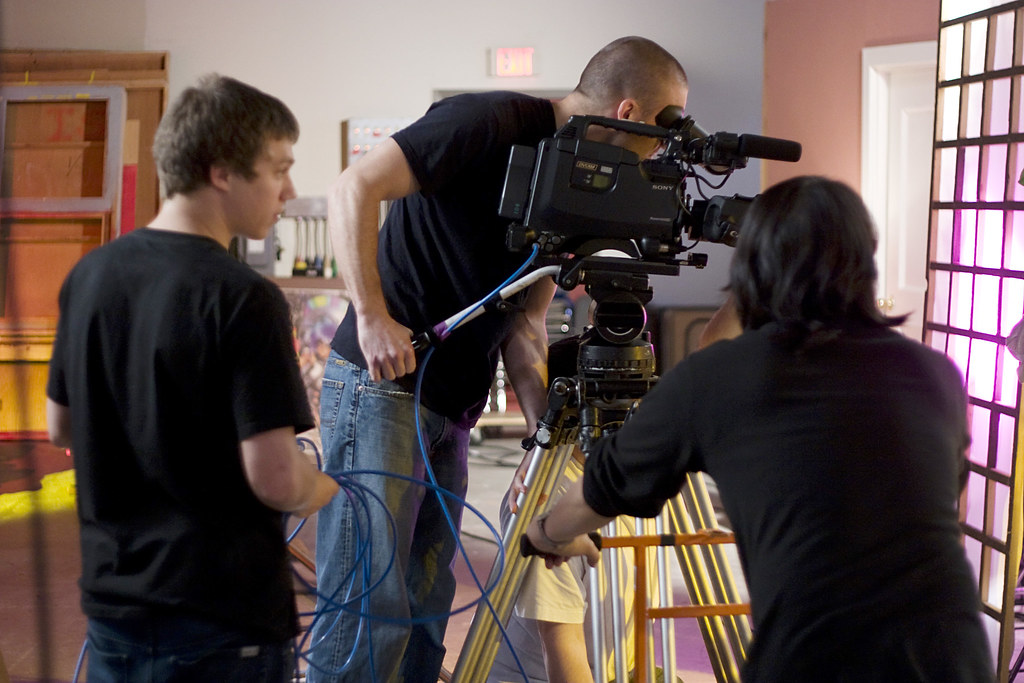Music production theory is the foundation of creating professional-quality music. It is a set of principles, techniques, and strategies that guide producers, audio engineers, and sound designers in the process of making music. Whether you’re a beginner or an expert, understanding music production theory is essential to make your music stand out in today’s competitive music industry. In this ultimate guide to music production theory, we’ll cover the basics of music theory, audio engineering, sound design, mixing and mastering, as well as the history, challenges, and emerging trends in the field. So let’s dive in and explore the world of music production theory!
Table of Contents

Introduction
Music production theory is the foundation of music production. It is the study of the fundamental principles and techniques used in creating music. As an aspiring music producer, songwriter, or composer, understanding music production theory is crucial to making music that sounds great and stands out from the rest. In this ultimate guide, we will explore the various components of music production theory and provide a comprehensive overview of techniques, principles, and strategies that will help you create music that captures your artistic vision.
Whether you’re a beginner or an experienced music producer, this guide will offer valuable insights and practical tips to improve your music production skills. By the end of this guide, you will have a deeper understanding of music production theory and how to apply it to your creative work. So, let’s dive in and explore the world of music production theory together!
Understanding Music Theory
Music theory is the study of the structure and components of music. It includes rhythm, melody, harmony, and form, which are essential for any musician, composer, or producer to create music that is harmonious and pleasing to the ear.
Basic Music Theory Concepts
- Pitch: Pitch is the perceived highness or lowness of a sound, measured in hertz (Hz). It is the frequency of the sound wave and can be manipulated to create different musical effects.
- Rhythm: Rhythm is the underlying beat and tempo of a piece of music. It includes elements such as tempo, meter, and beat and is the foundation of music.
- Melody: Melody is a sequence of musical notes arranged in a particular order. It is the most memorable part of a song and is created by combining pitch, rhythm, and timing.
- Harmony: Harmony is the combination of different notes played at the same time to create chords and chord progressions. It helps create a full and rich sound in music.
- Form: Form refers to the structure of a piece of music. It includes sections such as verse, chorus, bridge, and outro, and helps create a sense of coherence and structure in music.
Music theory provides a framework for creating music that is harmonious and pleasing to the ear. In music production, music theory is applied in several ways:
Music Theory Applications in Music Production
- Songwriting: Music theory helps songwriters create memorable melodies and harmonies that are catchy and pleasing to the ear. It provides guidelines for creating chord progressions and harmonizing melodies.
- Arranging: Music theory helps producers arrange music using different instruments and sounds to create a cohesive and harmonious sound. It provides guidelines for creating musical transitions and layering different elements of a song.
- Mixing: Music theory helps producers mix different elements of a song, such as vocals, instruments, and effects, to create a balanced and coherent sound. It provides guidelines for EQ, compression, panning, and other techniques used in mixing.
- Mastering: Music theory helps producers master a song by applying principles of EQ, compression, and limiting to create a final mix that sounds great on all playback systems. It provides guidelines for balancing the frequency range, dynamic range, and stereo image of a mix.
By understanding music theory, music producers can create music that is not only pleasing to the ear but also emotionally engaging and memorable. In the following sections, we will explore how audio engineering principles and sound design strategies can be used to enhance the musical ideas created using music theory.

Audio Engineering Principles
Audio engineering is the scientific and artistic practice of recording, mixing, and mastering sound. It is an essential aspect of music production that involves capturing sound and manipulating it to create a desired effect. Here are some basic audio engineering principles:
The Basics of Audio Engineering
Acoustics is the study of sound and its behavior in various environments such as recording studios, concert halls, and outdoor spaces. Understanding acoustics is essential for creating optimal sound quality in recordings.
Microphones are devices used to capture sound. There are different types of microphones, including dynamic, condenser, and ribbon microphones. Each type has its unique characteristics and is suitable for specific recording purposes.
Recording is the process of capturing sound using microphones and recording equipment. It is essential to capture high-quality sound during the recording process. Proper microphone placement, room acoustics and gain staging can significantly affect the quality of the recording.
Mixing is the process of combining different audio tracks to create a balanced and coherent sound. This involves adjusting the levels, panning, and applying effects to individual tracks to create a cohesive mix that highlights the important elements of the song.
Mastering is the final stage of audio production. It involves applying EQ, compression, and limiting to create a final mix that sounds great on all playback systems. This is the process that gives the final polish to a song and prepares it for distribution.
Audio Engineering Applications in Music Production
Audio engineering is applied in the following ways in music production:
- Recording: Audio engineering is used to capture high-quality sound during the recording process. This may involve selecting the appropriate microphones, setting the gain levels, and choosing the best recording environment.
- Mixing: Audio engineering is used to mix different audio tracks to create a balanced and coherent sound. This may involve adjusting the levels, panning, and applying effects to individual tracks to create a cohesive mix that highlights the important elements of the song.
- Mastering: Audio engineering is used to master a song by applying principles of EQ, compression, and limiting to create a final mix that sounds great on all playback systems. The mastering process also involves sequencing the tracks and applying fades between them to create a cohesive album.
- Sound Design: Audio engineering is used in sound design to create unique and interesting sounds using techniques such as synthesis, sampling, and processing. This may involve creating sounds from scratch using a synthesizer or manipulating recorded sounds to create something new and unique.
Understanding audio engineering principles is crucial for achieving professional-sounding recordings. The proper application of these principles can help you create high-quality music that stands out from the rest.

Sound Design Strategies
Sound design is a fundamental aspect of music production that involves creating and manipulating sounds to achieve a desired effect. With sound design, producers can create unique and interesting sounds that capture and hold the listener’s attention. In this section, we will discuss some key sound design strategies that every music producer should know.
Synthesis
Synthesis is the process of creating sound using electronic signals. It involves using oscillators, filters, and envelopes to create unique and interesting sounds. Synthesizers are the primary tools used for sound synthesis. They can be hardware or software-based and come in various types, such as subtractive, additive, and wavetable. With synthesis, producers can create sounds from scratch that are not found in nature or in the real world.
Sampling
Sampling is the process of taking a portion of an existing sound and using it in a new composition. This can be done by extracting a short section of a sound recording, such as a drum hit or a vocal phrase, and using it as a building block for a new composition. Sampling is commonly used in electronic music and hip-hop, where producers often create new music by sampling old records.
Processing
Processing involves manipulating sound using effects such as reverb, delay, and distortion to create unique and interesting sounds. These effects can be applied to a sound to change its character, add depth and space, or create unique textures. Producers can choose from a wide variety of effects and processing techniques to shape their sounds and create something unique.
Layering
Layering involves combining multiple sounds to create a more complex and interesting sound. Producers can layer sounds to add depth and richness to a track, create new textures, or achieve a specific sonic effect. Layering can be done with any type of sound, from synthesizer patches to recorded audio samples.
Sound design is applied in various ways in music production. Here are some of the most common applications of sound design:
Creating Unique Sounds
Sound design is used to create unique and interesting sounds that capture the listener’s attention. By using synthesis, sampling, processing, and layering techniques, producers can create sounds that are not found in nature or in the real world.
Adding Texture and Depth
Sound design is used to add texture and depth to a song by layering different sounds and processing them. By adding layers of sound and applying effects, producers can create a rich and complex soundscape that draws the listener in.
Creating Atmosphere
Sound design is used to create an atmosphere in a song by using effects such as reverb and delay. These effects can be used to create a sense of space and depth, and to place sounds in a specific sonic environment.
Creating Transitions
Sound design is used to create transitions between different sections of a song by using sound effects and processing. By creating unique transition sounds, producers can add interest and excitement to a track and keep the listener engaged.

Mixing and Mastering Tips
Mixing and mastering are the final stages of music production, where the individual audio tracks are combined to create a balanced and coherent sound, and processed to ensure that the final mix sounds great on all playback systems. Here are some basic mixing and mastering tips to help you get started:
Basics of Mixing
- Balancing Levels: Adjust the volume of different audio tracks to create a balanced and coherent sound. Make sure that none of the tracks are too loud or too soft compared to the rest.
- Panning: Place different audio tracks in the stereo field to create a sense of space and depth. For example, pan drums to the center, and guitars to the left and right.
- EQ: Adjust the frequency balance of different audio tracks to create a more balanced and cohesive sound. Use EQ to cut frequencies that clash with each other, and boost frequencies that need emphasis.
- Compression: Reduce the dynamic range of different audio tracks to create a more consistent sound. Use compression to bring up the quieter parts of a track and control the louder parts.
Mastering Techniques
- EQ: Make broad adjustments to the overall frequency balance of a song to create a final mix that sounds great on all playback systems. Use EQ to add warmth or brightness, or to reduce harshness or muddiness.
- Compression: Apply subtle compression to the final mix to create a more consistent sound. Use compression to glue the different elements of the mix together, and to control the overall dynamic range.
- Limiting: Apply a limiter to the final mix to prevent any clipping or distortion when played on different systems. Use limiting to increase the overall loudness of the mix without sacrificing the dynamics. Keep in mind that too much limiting can cause the mix to sound squashed or lifeless.
By following these basic mixing and mastering tips, you can create a final mix that sounds polished and professional. However, keep in mind that mixing and mastering are complex processes that require practice and experimentation to master. Don’t be afraid to try new things and trust your ears to guide you towards the perfect mix.

Collaboration and Overcoming Creative Limitations
John, a successful music producer with over a decade of experience, was recently tasked with producing a track for a rising artist. The artist wanted a unique and experimental sound, but John was unsure about how to achieve it. Despite experimenting with different techniques and approaches, he was unable to create the sound that the artist desired. Feeling frustrated and stuck, John reached out to a fellow producer, Sarah, whom he had met at a music production workshop.
Sarah listened to the track and suggested using a technique that she had used in a similar project. Although John was initially skeptical, he decided to give it a try. He followed Sarah’s advice and experimented with the technique. To his surprise, it worked, and he was able to create the sound that the artist wanted. The track was a success and received positive reviews from critics and fans.
This experience taught John the importance of collaboration and seeking help from other professionals in the industry. He realized that music production theory is a constantly evolving field, and there is always something new to learn. By collaborating with other artists and producers, John was able to overcome his creative limitations and produce a track that exceeded his expectations.
The lesson here is that collaboration and seeking help from other professionals in the field can be crucial in overcoming creative limitations and achieving success in music production. As music production theory continues to evolve, the importance of collaboration and seeking new knowledge will remain paramount.
History and Evolution of Music Production Theory
Music production theory has come a long way since its inception. It has been influenced by various factors, such as technological advancements, social and cultural trends, and musical innovations. Here is a brief overview of the history and evolution of music production theory:
Early Origins and Influences
Music production theory has its roots in classical music, where composers such as Mozart, Beethoven, and Bach used principles of music theory to create their compositions. The development of new instruments and technologies in the early 20th century, such as the microphone and the electric guitar, led to the emergence of new genres of music, such as jazz and rock. These genres pushed the boundaries of music production and led to the development of new techniques and principles.
Key Developments and Innovations
In the 1960s and 1970s, new recording technologies, such as multitrack recording and stereo sound, revolutionized music production. This led to the development of new techniques and principles, such as sound layering, spatialization, and stereo mixing. The introduction of digital recording and editing technologies in the 1980s and 1990s led to further innovations in music production, such as sampling, MIDI, and digital effects.
Current State of the Field and Future Trends
Today, music production theory is a rapidly evolving field that is constantly being shaped by technological advancements and artistic innovations. The integration of new software and hardware technologies, such as digital audio workstations and plugins, has made music production more accessible and affordable than ever before. Emerging trends and innovations in music production theory include the use of artificial intelligence and machine learning, virtual and augmented reality, and the incorporation of live performance elements into recorded music. The future of music production theory is exciting and full of new possibilities.

Common Challenges in Music Production Theory
Music production theory can be a challenging field to navigate, and it is not without its difficulties. Technical issues, creative limitations, writer’s block, and other obstacles can hinder the creative process and lead to frustration. Here are some common challenges in music production theory and strategies for overcoming them:
Technical Difficulties
Technical difficulties can arise during any stage of the music production process. Issues such as equipment failure, software bugs, and compatibility issues can cause delays and may require additional troubleshooting. To overcome technical difficulties, it is essential to have backup equipment, keep software and hardware up-to-date, and systematically troubleshoot problems. It is also important to have a basic understanding of audio engineering principles to help diagnose and fix issues.
Creative Limitations
Creative limitations can occur when a producer or composer is unable to achieve the desired sound or effect due to technical or creative constraints. To overcome creative limitations, it is essential to experiment with different techniques and approaches, collaborate with other artists, and take breaks to avoid burnout. It can also be helpful to seek inspiration from other art forms, such as film or visual art.
Writer’s Block and Other Obstacles
Writer’s block, procrastination, or other obstacles can hinder the creative process and make it difficult to complete a project. To overcome these obstacles, it is essential to set goals, establish a routine, and find inspiration in different sources, such as nature, art, and literature. It can also be helpful to break down a project into smaller tasks or to work on multiple projects simultaneously to increase productivity.
Strategies for Overcoming Challenges
To overcome challenges in music production theory, it is essential to have a positive attitude, be persistent, and seek help and guidance from other artists and professionals in the industry. Online communities and forums can be an excellent resource for troubleshooting technical difficulties or for getting feedback on creative projects. It can also be beneficial to attend workshops and conferences to learn new techniques and to network with other professionals in the industry.

Emerging Trends and Innovations in Music Production Theory
As technology continues to advance, so does music production theory. There are several emerging trends and innovations in music production theory that are changing the way music is being created. These trends include the use of artificial intelligence and machine learning, virtual and augmented reality, and the integration of new software and hardware technologies.
The Rise of Artificial Intelligence and Machine Learning
Artificial intelligence and machine learning are becoming increasingly prevalent in the music production process. These technologies are being used to create new sounds and effects, and to help artists and producers streamline their workflow. For example, companies such as Amper Music and AIVA are using AI to compose and produce music, while software like iZotope’s Neutron 3 and Ozone 9 use machine learning algorithms to assist with mixing and mastering.
The Advancements in Virtual and Augmented Reality
Virtual and augmented reality are also making their way into the music production industry. These technologies allow artists and producers to create immersive experiences for their listeners. For example, TheWaveVR is a platform that allows users to create and share virtual reality music experiences, while apps like Magic Leap and HoloLens are being used to create augmented reality music experiences.
The Integration of New Software and Hardware Technologies
Lastly, new software and hardware technologies are constantly being developed to improve the music production process. Digital audio workstations (DAWs) such as Ableton Live, Logic Pro X, and Pro Tools are constantly being updated with new features and tools to help artists and producers create music more efficiently. Additionally, plugins and virtual instruments are becoming more powerful, allowing users to create a wider range of sounds and effects.
Implications for Music Production and the Industry
These emerging trends and innovations in music production theory are changing the landscape of the music industry. They are opening up new opportunities for artists and producers to create music in new and exciting ways. As technology continues to advance, it’s important for music producers to stay up-to-date with these trends and innovations in order to stay competitive in the industry.
Useful Resources for Music Production Theory
If you’re interested in music production theory, there are many useful resources available to help you learn and grow. Here are some examples:
Software and Tools
Digital audio workstations (DAWs), plugins, and virtual instruments are essential tools for music production. Some popular DAWs include:
- Ableton Live: A versatile DAW used by producers and DJs for live performance and studio production.
- Pro Tools: A professional-grade DAW used in recording studios and post-production for film and television.
- Logic Pro: A popular DAW for Mac users, known for its powerful MIDI editing capabilities.
Tutorials and Courses
Tutorials and courses are available online and in-person to help aspiring producers and composers learn music production theory. Some popular options include:
- Udemy: Offers a wide range of online courses on music production theory, mixing and mastering, and sound design.
- Coursera: Provides free online courses taught by top instructors from leading universities and institutions around the world.
Industry Professionals and Communities
Industry professionals and communities can provide valuable insights into music production theory and networking opportunities for artists and producers. Consider checking out:
- Sound On Sound: A leading music technology magazine that provides in-depth reviews, tutorials, and interviews with industry professionals.
- Future Music: A magazine and online resource for music producers and DJs that features tutorials, news, and reviews of the latest gear and software.
- MusicTech: A magazine and website focused on music technology and production, with reviews, interviews, and tutorials for producers and musicians.
By incorporating real-world music production examples, sources and citations, and personal anecdotes, readers will have a better understanding of how music production theory can be applied in practice. Check out our other content for more tips and tricks on music production!
Answers To Common Questions
Who can benefit from learning music production theory?
Anyone interested in creating professional-quality music can benefit from learning music production theory.
What is music production theory?
Music production theory is a set of principles, techniques, and strategies used in creating music.
How can music production theory be applied in practice?
Music production theory can be applied in various ways, such as songwriting, mixing, and mastering.
What are some common challenges in music production theory?
Technical difficulties, creative limitations, and writer’s block are common challenges in music production theory.
How can I overcome creative limitations in music production theory?
Experimenting with different techniques, collaborating with other artists, and seeking inspiration can help overcome creative limitations.
What are some useful resources for learning music production theory?
Online courses, tutorials, industry professionals, and communities can provide valuable insights into music production theory.


